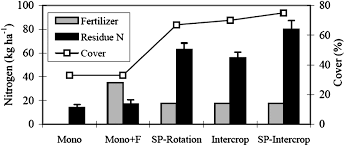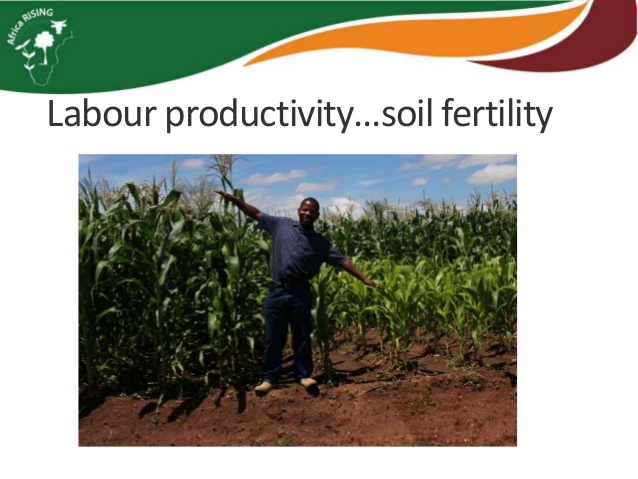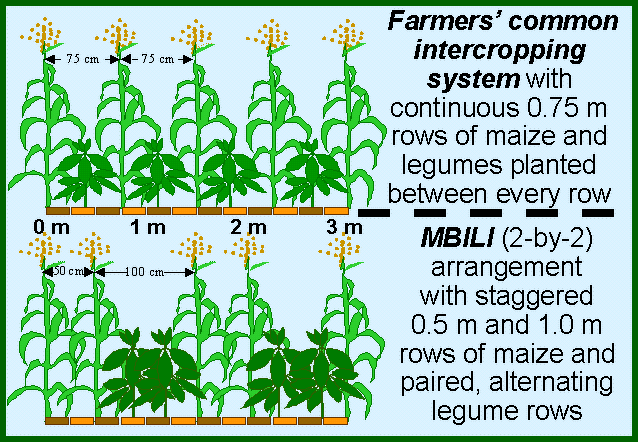Maize-legume rotation and intercropping
Summary
Cultivating maize and legumes on the same piece of land simultaneously or alternatingly offers multiple advantages as compared to growing the cereal as continuous monocrop. Legumes enhance the amount of nitrogen (N) in soils during and after its cultivation which can be used to tackle constraints on cereal yields in subsistence farming systems because of nutrient limitation and make savings on N fertilizer expenses in commercial farming systems. Rotation and intercropping of maize with legumes make it possible to achieve a high level of land, nutrient and water use efficiency thanks to carry-over and synergistic effects among the two different crops. Mixing of maize and legume is also reducing the infestation rate of weeds, pests and diseases on farmer fields which benefits the productivity of both crops and slows down the spread of organisms that are harmful to agriculture. Rotational and intercropping maize-legume systems have been tested and disseminated with large numbers of farmers in major growing areas of Sub-Saharan Africa, giving rise to substantial increases of maize and legume yields, and total harvests from an area of land. The cultivation of a high-carbohydrate crop and high-protein crop on the same piece of farmland is leading to a more nutritional and balanced diet for subsistence farmers, and also mitigates the risk of a hunger season when one of the crops fails because of drought or pest attacks.
About the Solution
Biological nitrogen fixation taking place in the roots of legumes benefits the productivity of maize crops that are rotated or intercropped on the same field because part of the assimilated nitrogen is transferred between the crops through different soil processes. Mineral fertilizer application in this type of mixed cropping systems are used very efficiently since either of the crop will take advantage of dispersing and residual nutrients. Intercropping of maize and legumes is especially helping to alleviate weed infestation, soil erosion and run-off as the method of cultivation keeps more land covered and protected throughout the growing season. Food legumes like soybeans and forage legumes like desmodium are known to decrease infestations of parasitic Striga weeds in maize crops since these crops will induce germination of Striga spores but do not get attacked by the pest at its roots; with effects being largest under intercropping, and to a lesser extent under rotation. Tall-growing maize crops help to better regulate the temperature of the soil and inside the canopy of legumes grown alongside through shading, which enhances crop water productivity and also optimize light use efficiency. In comparison to monocrop cultures, intercropping typically generates larger returns from labor, and like for maize-legume rotation enhances the profitability of mineral fertilizer and organic matter inputs.
Intercropping and rotation is suitable for all maize and legume growing areas in Sub-Saharan Africa, as long as the variety and type of crops is appropriately selected for prevalent conditions. The mixed cultivation method is advantageous in regions or on individual farmer fields that suffer from low nitrogen availability in soils, which is the case for many smallholder farmers that continuously monocrop maize and have limited use of fertilizer, especially in dense-populated highlands where land resources are scarce. Also for intensive maize production systems the intercropping and rotation of legumes has benefits on yields and profits in the short and long term through reductions in fertilizer use and losses to the environment. Intercropping of maize and legumes is very effective for rural communities in which availability of labor is limited as the cultivation method brings down the total time spent on farm and crop management. The improvement of soil fertility and crop nutrition that is realized in mixed maize-legume systems contribute to strengthening the climate resilience of food systems and the communities that draw income from them.
Rotation and intercropping of maize can involve a large range of food legumes such as common beans, pigeon peas, cowpeas, groundnuts and soybeans, as well as legumes grown for animal fodder like desmodium, velvet beans and jack beans. The type of legume that is mixed with maize can be chosen by farmers to in line with agro-ecological conditions, production needs, eating habits and value:cost factors. Improved varieties of both crops that are adapted to specific conditions in growing areas should be used to get maximal benefits out of double-crop cultivation method.
The approaches used for cultivating a maize-legume rotation or intercrop are the same like when growing a monocrop culture. For intercropping, the two crops can be planted simultaneously or in relay so their growth and harvest are aligned with farmer conditions and needs. Different layouts can be used for intercropping, with maize and legumes planted on alternating rows, in strips of 2-3 rows or randomly scrambled across rows. If mixed with common beans, soybeans or peas, the maize crop can be planted at its usual density and the legume in between, while for large growing legumes the spacing of maize crops needs to be adjusted. Legume crops should be inoculated with an elite strain of N-fixing microorganisms to maximize carry-over effects on maize.
Commercialization
Commercially available
Solution Images
Institutions

Accompanying Solutions
Drought tolerant varieties (DTMA, WEMA, others), Specialized pre-plant fertilizer blending and N topdressing, Fall armyworm control (e.g. FORTENZATM Duo)



